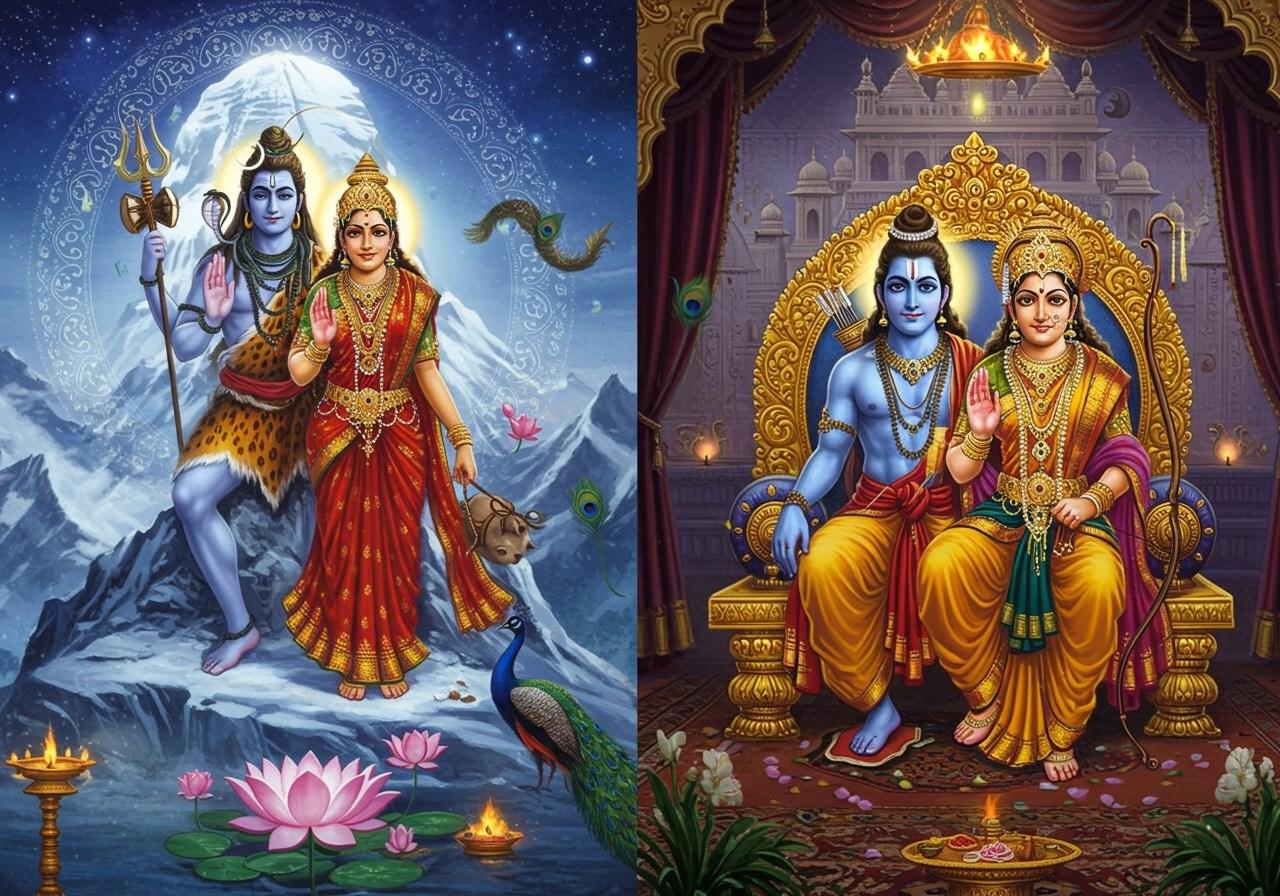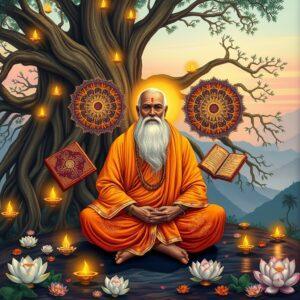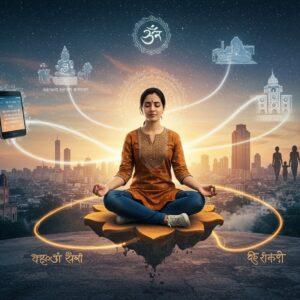
Kalidasa, a celebrated Classical Sanskrit writer of the 4th-5th century CE, holds a prominent place as one of ancient India’s greatest poets and playwrights. His literary contributions include three plays, two epic poems, and two shorter poems. Among these, his most renowned epics are “Raghuvamsha,” narrating the lineage of Rama, and “Kumarasambhava,” which extols the marriage of Shiva and Parvati. Kalidasa’s works are highly regarded for their literary merit and draw heavily from Hindu Puranas and philosophy. His magnum opus is the play “Shakuntala.”
A Comparative Study of Raghuvamsha and Kumarasambhava
Kalidasa, often hailed as the “Shakespeare of India,” is revered for his literary creations. His epics, ‘Kumarasambhava’ and ‘Raghuvamsa,’ are cornerstones of classical Sanskrit literature. This analysis delves into these iconic works, comparing their distinct attributes and enduring influence on Indian culture.
Historical and Cultural Significance
The Gupta era (4th-6th century CE), known as India’s Golden Age, witnessed remarkable advancements in arts, science, and literature. Kalidasa’s works mirror the refined cultural landscape of this period. His epics glorify the Indian subcontinent, emphasizing its customs, values, and societal norms.
Themes and Motifs
Both ‘Kumarasambhava‘ and ‘Raghuvamsa‘ explore themes of love, duty, and the divine. ‘Kumarasambhava’ centers on the celestial romance of Lord Shiva and Parvati, symbolizing cosmic unity. ‘Raghuvamsa’ chronicles the Raghu dynasty’s lineage, highlighting ideals of kingship and dharma (righteous conduct). Recurring motifs encompass nature, heroism, and divinity.
Narrative Structure and Poetic Style
Kalidasa’s narrative style is characterized by poetic grace and vivid descriptions. ‘Kumarasambhava’ employs a lyrical approach, emphasizing emotional and aesthetic elements. ‘Raghuvamsa’ adopts a narrative-driven style, detailing the exploits and virtues of the Raghu dynasty’s rulers. Metaphors, similes, and imagery abound in both epics, showcasing Kalidasa’s command of language.
Character Development
The characters in ‘Kumarasambhava‘ and ‘Raghuvamsa‘ are portrayed with depth and complexity. In ‘Kumarasambhava,’ Shiva and Parvati, while possessing divine qualities, exhibit human emotions and conflicts. ‘Raghuvamsa’ presents a diverse cast of characters, from King Dilipa to Rama, each embodying exemplary rulers and warriors. Kalidasa’s skill in character development imbues these mythical figures with life.
Symbolism and Imagery
Kalidasa’s use of symbolism and imagery enriches the thematic depth of his epics. ‘Kumarasambhava’ utilizes mountain imagery, particularly the Himalayas, to represent the grandeur and purity of divine love. ‘Raghuvamsa’ employs symbols like chariots and rivers to symbolize life’s journey and the passage of time. These symbols add layers of meaning to the narrative.
Enduring Influence and Legacy
Kalidasa’s epics have left an indelible mark on Indian literature and culture, inspiring countless adaptations in classical dance, music, and theater. The themes and characters from ‘Kumarasambhava’ and ‘Raghuvamsa’ have become interwoven with Indian mythology and folklore. Kalidasa’s influence transcends literature, shaping artistic and cultural consciousness across generations.
Poojn.in: Connecting You to India’s Rich Cultural Heritage
Poojn.in, India’s leading online store for cultural and religious products, provides a gateway to connect with the profound legacy of Kalidasa’s epics. Whether you seek to deepen your understanding of these narratives or create a sacred space for reflection, Poojn.in offers a wide selection of products to support your journey.
- Ram Darbar Statues: Exquisitely crafted statues of Lord Rama with Sita, Lakshmana, and Hanuman, allowing you to bring the essence of ‘Raghuvamsa’ into your home. Explore our collection of Ram Darbar statues.
- Shiva and Parvati Murtis: Beautifully sculpted murtis depicting the divine couple, symbolizing the love and union celebrated in ‘Kumarasambhava’. These murtis can serve as a focal point for meditation and reflection. Find your perfect Shiva and Parvati murti here.
- Incense and Puja Supplies: Enhance your spiritual practice with aromatic incense, diyas (oil lamps), and other puja essentials, creating a serene atmosphere for contemplation and connection with these timeless epics. Shop our range of incense and puja supplies.
Conclusion
Kalidasa’s epics, ‘Kumarasambhava’ and ‘Raghuvamsa,’ are more than just literary achievements; they are portals into ancient India’s rich cultural and historical tapestry. Through themes of love, duty, and divinity, Kalidasa links us to our heritage. His poetic elegance and narrative skill breathe life into characters and stories, making them timeless. These epics continue to inspire our art, literature, and cultural practices, reminding us of the enduring wisdom and beauty of our traditions. As we embrace modernity, let us also cherish and celebrate the legacy of Kalidasa, whose works remain a beacon of Indian culture.
For further exploration of the epics and related cultural aspects, visit Ramayana Characters and Life Lessons and Ramayana and Mahabharata: A Comparative Study on poojn.in.


